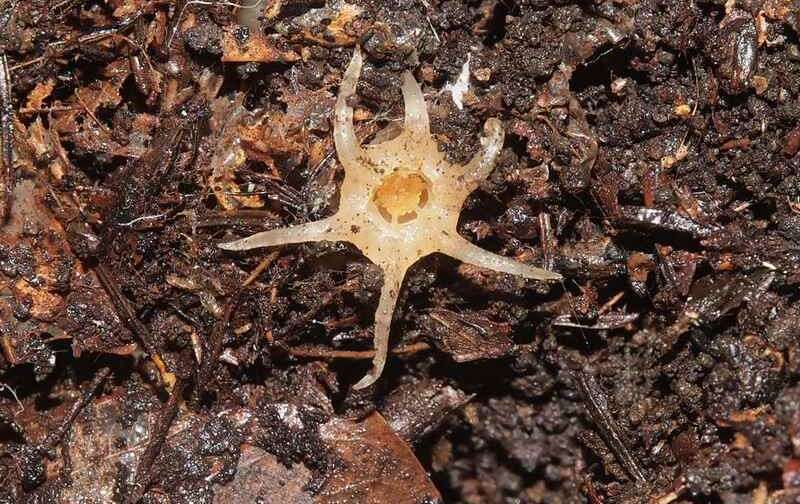Cavemen Used Glue to Make Stone Tools 40,000 Years Ago-the Evidence is Sticky
The mixture was just sticky enough for a stone tool to remain stuck in it, but without adhering to hands, making it perfect for adding a handle

In botany, it's well-established that plants and fungi have multiple symbiotic relationships under the dirt of the forest floor, but a new species of plant identified in Japan has been found actually consuming fungi—a behavior never observed before.
Scientists also say it's the first time a new plant has been identified in Japan—a country renowned for its extensive flora research—in almost 100 years.
The new species of fairy lantern, a group of tiny glass-like plants, is white and doesn't engage in photosynthesis, but rather feeds on fungal mycelia in the ground.
Fairy lanterns, or Thismiaceae as they are known to botanists, are very unusual plants found mainly in tropical but also in subtropical and temperate regions.
The Japanese researchers explained that they are often hidden under fallen leaves and only for a brief period produce above-ground flowers that look like glasswork.
The Japanese name for Thismia, one of the major groups within this family, is Tanuki-no-shokudai—which means "raccoon dog's candleholder" and refers both to their shape and their underground lifestyle.
However, they are also extremely rare and difficult to find.
"At present, approximately 100 species within the family have been identified, nearly half of which are known only from their first discovery, sometimes from a single specimen," said Kobe University botanist Dr. Kenji Suetsugu.
Dr. Suetsugu has long-term collaborations with local botanists who have access to secluded areas all over Japan.
"The dedication of Japanese amateur researchers to revealing the hidden flora of these regions has been crucial in identifying species unknown to science."
When he was sent a specimen of a fairy lantern that a hobby botanist had found and that a local expert thought represented a new species of the genus of Tanuki-no-shokudai, he knew he had to investigate.
"This plant was not included in any of the existing genera, such as Thismia, because of its unique features, and it became necessary to obtain additional individuals for further examination," said Dr. Suetsugu.
He went to Kimotsuki, where the discovery had been made, but could not find any other samples. A year later he tried again and got lucky, finding four more plants in the same narrow area.
Based both on morphological and genetic analysis, the research team concluded that the plant is not only a new species, but in fact different enough from Tanuki-no-shokudai to be a different genus.
The researchers, whose findings were published in the Journal of Plant Research, believe that the plant probably diverged at an early stage in the evolution of the whole Thismiaceae family and retains characteristics that are common to the family but have been lost in the Thismia genus.
Dr. Suetsugu chose the name Mujina-no-shokudai—meaning "badger's candleholder" for the new plant.
He explained that "Mujina" is an old Japanese word for a badger, but sometimes has also been used for the raccoon dog which it resembles but is different from.
"Japan is one of the regions in the world where botanical surveys are most advanced, making the discovery of new plant species extremely rare, and the discovery of a new genus even more so," adds Dr. Suetsugu, who explained that the last discovery of a new vascular plant concurrently identified as a separate genus was the discovery of Japonolirion in 1930, almost 100 years ago.
"This research might suggest that many other new species may be hiding in regions previously thought to be well-studied and underscores the critical need for ongoing exploration and investigation of the planet's flora both abroad and at home."
A plant that feeds on fungi and is so limited in its local spread is also exceptionally vulnerable to environmental change, according to the research team.
"A segment of our future research will be dedicated to ecological studies aimed at deciphering the interactions between Relictithismia and its fungal hosts, in addition to assessing the impact of environmental alterations on these associations," said Suetsugu.
SHARE This Wonderful Discovery Of A Badger's Candleholder With Your Friends…
Be the first to comment